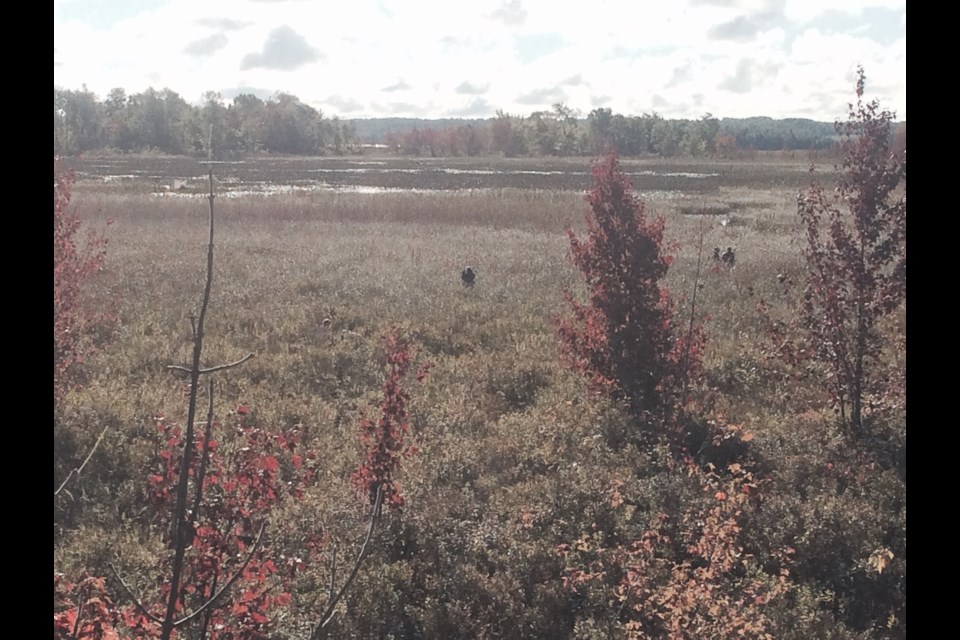
"The Cranberry Marsh is part of the "Callander Bay Wetland Conservation Reserve (C149)", which was planned as a protected conservation area, although it is currently still in the approval process [this book was written in 2011, not sure if that is still accurate]. The site is approximately 319 hectares in size and is located along the northwest shore of Callander Bay. It includes the North and Centre Channels leading into Callander Bay and is bordered to the south by Smith Island.
The Cranberry Marsh Trail was opened in the fall of 2007 and is a very popular walking site. A set of signs were made highlighting information of the marsh plants, trees, fish, trumpeter swans, animals and birds, as well as First Nation and shipping history of the area.

The marsh is important for fish spawning and waterfowl habitat. The wetland contains swamp, marsh and fens. This area is also considered to be important for waterfowl staging, moulting and breeding, and as a migratory passerine, shorebird or raptor stopover area. Bald eagles are sometimes seen in the area. It is ideal for hunting, boating, hiking, birding, nature appreciation, cranberry picking and fishing. Cranberries are often for sale in autumn in the North Bay farmer's market, and many local residents go out into the bog to pick them.
The cranberry marsh is also well known for the trumpeter swan reintroduction program. Callander Bay and the Cranberry Marsh were once home to trumpeter swans, but they disappeared due to hunting and loss of habitat. Once found all over North America, by 1933, there were only 77 individual swans known to be living in Canada, and 50 in the United States. Thankfully, with increased conservation efforts, trumpeter swans are no longer considered endangered in North America. However, Ontario is home to a mere 348 swans, and at that size, the population is not yet self-sustaining.
A pair of trumpeter swans had settled in the Cranberry Marshes of Callander Bay in 1999, but were killed by hunters the first day of hunting season, 2001.
On May 13, 2002, three breeding pairs were reintroduced into the Cranberry Marsh of Callander Bay. When the birds were released in Callander, their wing tip feathers were clipped so they could not fly away. For the release, crowds of people were asked to line the shore to keep them in the water and prevent them from trying to walk home.
By the time the wing tip feathers had grown back in and they were able to fly, they stayed since they had set up home here. Reintroduction of the Trumpeter Swans into Callander's Cranberry Marsh was a success.
14 additional birds were released in 2003, and six more in 2004. Teaching them to migrate was, at times, an effort. Well-intentioned people feed them after freeze-up which keeps them from leaving. In December 2003, an individual swan nicknamed "Droopy" had a bad wing and couldn't fly. He was trapped and driven to the Wye Conservation area south of Georgian Bay. Later, the last few flew as far south as the Magnetawan River, and found open water there. The birds are very hard, and with 2" thick layer of down, can survive to -30C"
Information taken from Don Clysdale's book Callander Now and Then